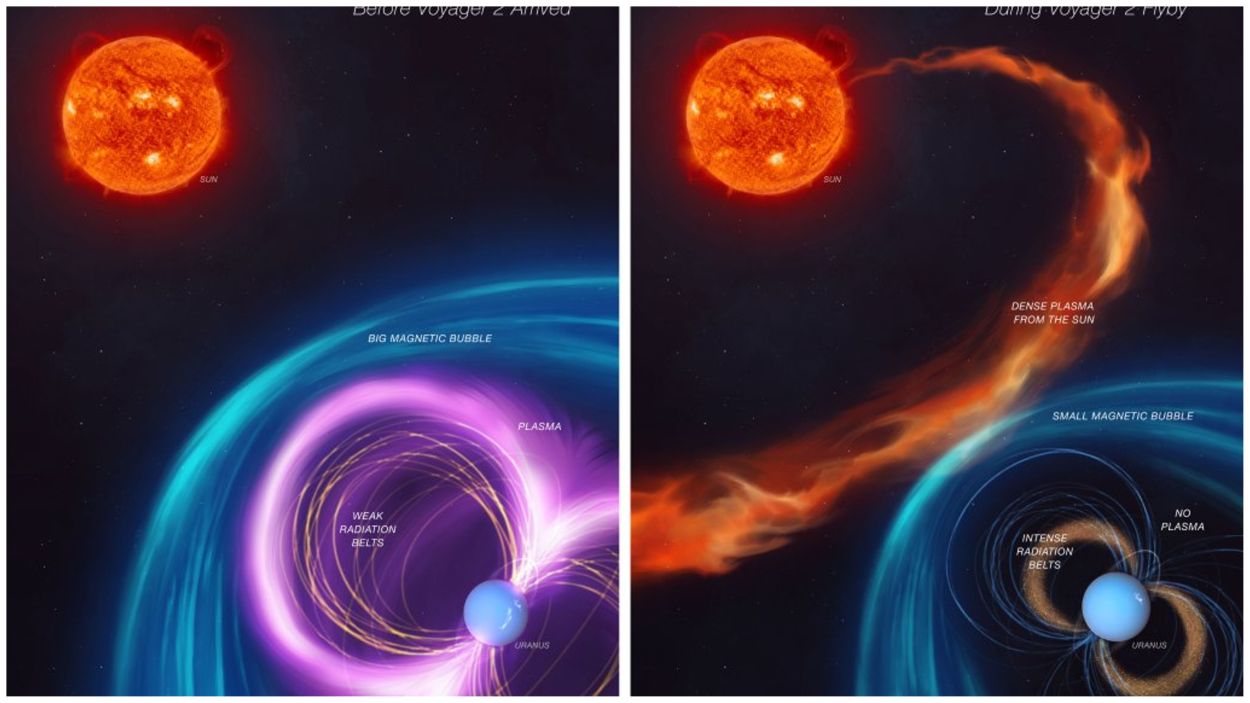During its 1986 Uranus flyby, NASA’s Voyager 2 spacecraft detected an unexpected magnetic phenomenon driven by solar wind, which has provided new insights into the planet’s magnetosphere.
A study published on November 11 in Nature Astronomy revealed that a recent analysis of 38-year-old data revealed unusual magnetic structures and behaviours unique to Uranus.
Key Findings on Uranus’s Magnetosphere
The study, led by Jamie Jasinski, a planetary scientist at NASA’s Jet Propulsion Laboratory and the California Institute of Technology, highlights that the timing of Voyager 2’s visit coincided with an intense solar wind event that distorted Uranus’s magnetosphere. This distortion is seen only about 4% of the time, and if the spacecraft had arrived even a week earlier, the observations and subsequent conclusions might have been markedly different.
Uranus’s extreme axial tilt significantly influences its magnetosphere, resulting in a complex “open-closed” magnetic process. This makes the solar wind effects highly variable and results in the magnetosphere cyclically opening and closing—a phenomenon not observed in any other planet in the solar system.
Implications for Future Exploration of Uranus
The findings also affect the magnetic behaviours of Uranus’s outermost moons, such as Titania and Oberon. These moons are situated within the planet’s magnetosphere, suggesting potential for future investigations into subsurface oceans through magnetic field detection. Jasinski notes that the conditions around Uranus simplify the process of detecting magnetic signatures indicative of liquid beneath the icy surfaces of these moons.
While Voyager 2 remains the only mission to visit Uranus, this study’s intriguing results drive a renewed interest in further exploring this ice giant. The unique magnetic dynamics observed suggest that Uranus offers rich opportunities for scientific discovery, underscoring the need for continued and more detailed exploration in future missions.






